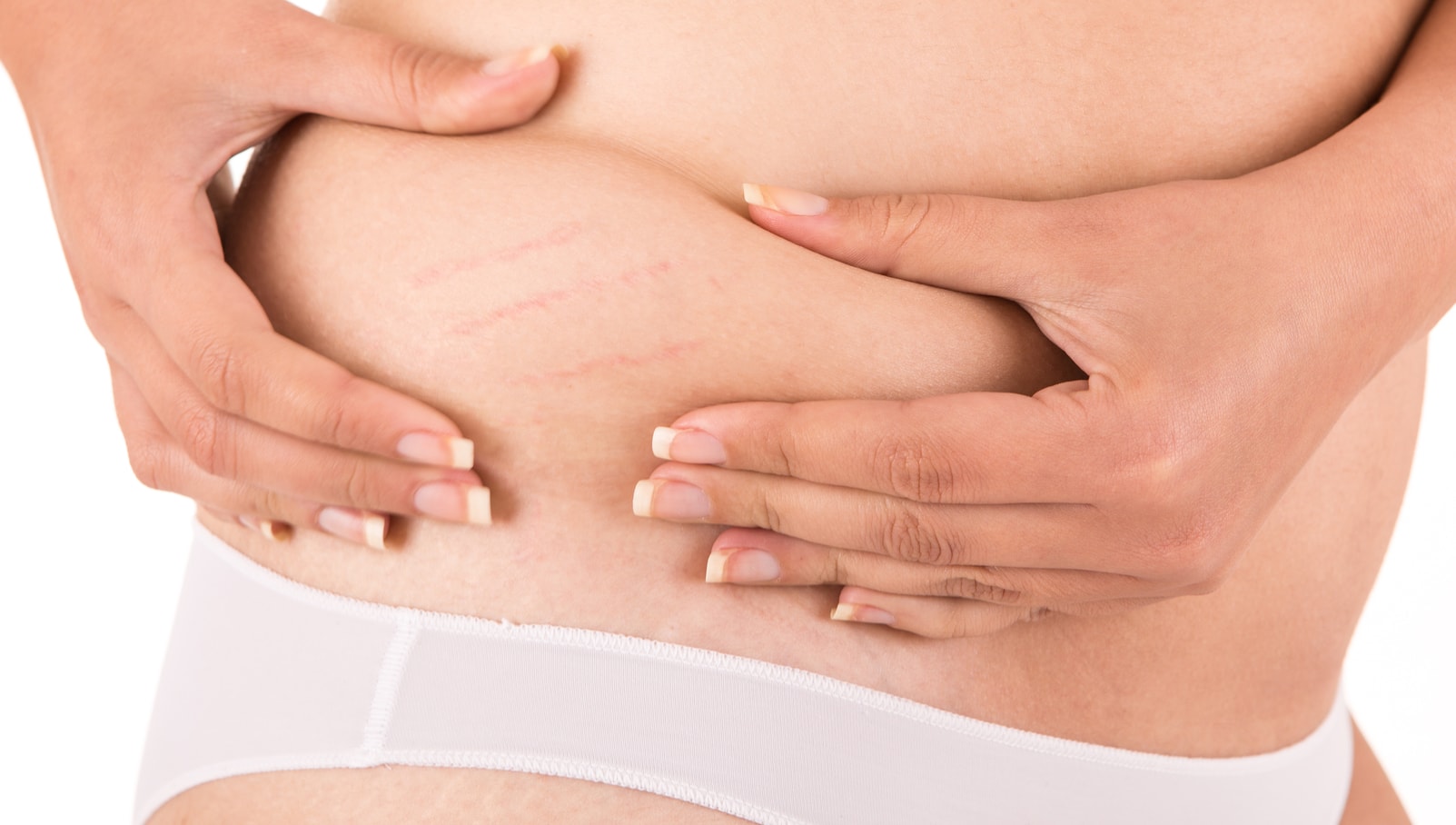

Stretch marks are parallel, streaky lines on the skin caused by distension of the skin from gaining weight or during pregnancy. The most common cause of stretch marks is a rapid stretching of the skin due to weight gain. This rapid distention of the skin is usually caused by pregnancy, weight gain, or hormonal changes in an individual from puberty to adolescence. This type of rapid growth does not happen in normal growth spurts.
There are two classifications of scars and they are acute or mature. Acute scars are very red in color and can be apparent for several years after the initial cause of the stretch marks is gone. On the other hand, mature scars are white. Each of these scars responds differently to treatment so one type of procedure does not work as well for the other.
Laser procedures are the most common form of treatment available for stretch marks. A laser uses wavelengths of light to target the area of concern. Depending on the type of scar, the doctor will select the appropriate laser which should allow the scar to absorb the wavelength. With red scars, a laser such as the Vbeam will be suitable because it uses a yellow beam of light. The yellow light will be absorbed into the red target to create heat. The heat will damage the blood vessels within the acute scar to make them vanish.
Mature scars have minimal blood vessels in them so a different kind of laser is used in order to stimulate the collagen. Unfortunately, the mature scars are quite difficult to get rid of. Technology is continually trying to develop creams and new techniques to rid the body of white scars but nothing has been greatly effective.
Over the past 20 years, doctors have been fairly successful in improving white scars using a fractional laser called the Fraxel. Although there are many different wavelengths for the Fraxel laser, the 1550nm. Wavelength is the one often used for resurfacing of stretch marks and scars and is found in the Fraxel Restore and Fraxel Dual lasers. The PicoSure laser uses pulse intervals within a fraction of a second. It was first designed for tattoo removal but with the advance in technology, the focus lens array was developed for the PicoSure laser and this allows the Pico to be a more gentle approach when attempting to improve scars.
Microneedling is a new way to raise collagen and improve scars. Microneedling does not use lasers. The newest microneedling device used by doctors, uses radiofrequency. A company called Lutronic recently brought out a new device called the INFINI. This device is made up of microneedles which are insulated and can penetrate the collagen without destroying the epidermis.
Not only do treatment options vary depending on the type of scar, they also vary according to the patient's ethnicity. A fair-skinned patient with red scars is the ideal candidate for acute stretch mark treatment. A person with darker skin may benefit from a laser procedure but still end up developing post-inflammatory hyperpigmentation which could leave them with brown spots all over the treated area.
Since mature stretch marks are not easily treated, it can take approximately 6 laser treatment sessions over a period of 6 months to see improvements. Even then, a patient should not expect to see more than a 25%-50% improvement, and some will not see much improvement at all. Therefore, it can be very costly and time consuming to treat these scars. For that reason, some doctors will offer a test phase to their patients. During the test phase, a quarter size scar is treated and observed for improvements and/or post-inflammatory hyperpigmentation. This will be done over a period of 6 months due to the fact that one treatment will not show results and this means one test will not show results either.
It is important to remember that all procedures have risks and that not all doctors have adequate training or knowledge of the most appropriate treatments in conjunction with the most suitable candidates. For example, the Fraxel Repair laser uses a wavelength of carbon dioxide. Lasers with carbon dioxide can slightly burn the skin and afford a greater risk of poorly healing scars if used on the neck and arms with the same settings as used on the face. Yet, if this laser is used on facial areas, it can beautifully treat wrinkles and acne scars.
There really is not much downtime when it comes to laser resurfacing and lessening scars. With the Vbeam, most people experience approximately two weeks of bruising. If the procedure is performed on the arms, legs or other concealable areas, the patient can just cover it up. Since there are no open sores or blisters, makeup can be used to cover bruising on the facial area. With the PicoSure laser, a patient will have some redness and puffiness. If the INFINI radiofrequency laser is used on the face, a patient can expect bruising, swelling a few days of redness and perhaps some flaking of the skin. However, if the INFINI laser is used elsewhere on the body, off-label, the patient may need a couple weeks of recovery time.
Typically, stretch marks will not reappear on the surface already treated unless the patient has some type of endocrinological disorder or a pituitary or adrenal gland disorder. These situations might make the stretch marks worsen.
With any scar, doctors recommend the avid use of sunscreen to protect the scar from reddening or becoming darker. It is advised that sunscreen be worn the day of the procedure as well as each and every day after the procedure due to the fact that the sun will darken the scar. This is especially important for people with darker skin in order to help prevent hyperpigmentation.
Written by Cosmetic Town Editorial Team - SP
Based on an exclusive interview with Ronald Shelton, MD in New York, NY